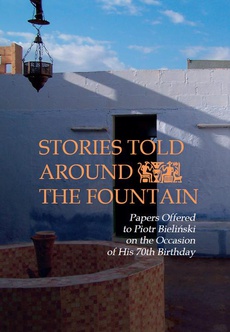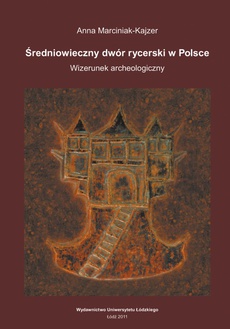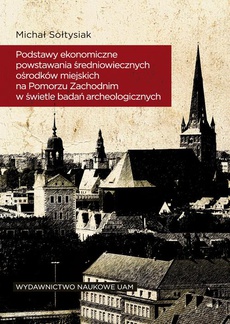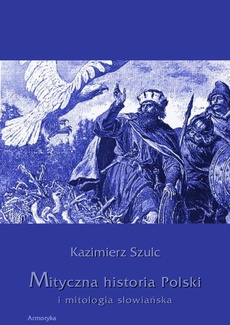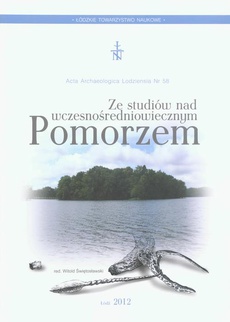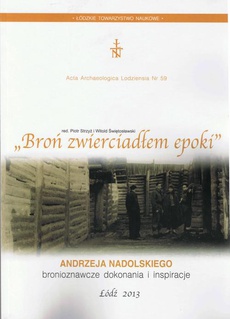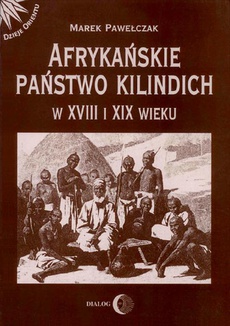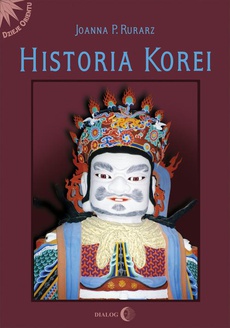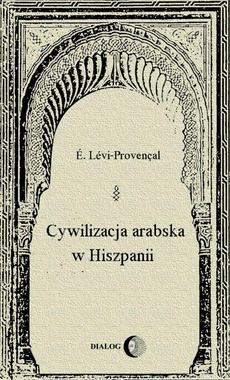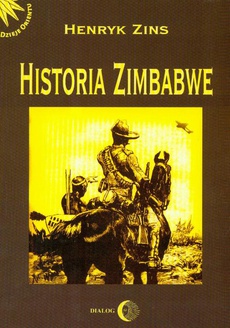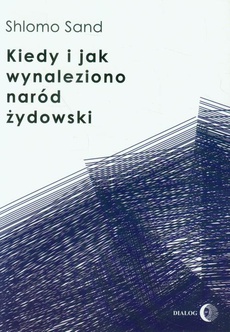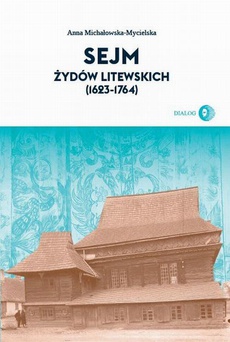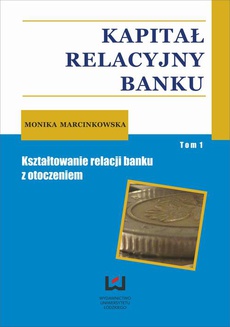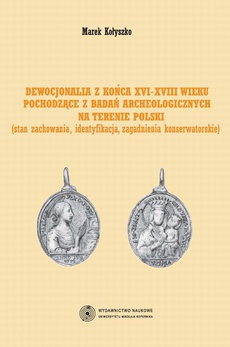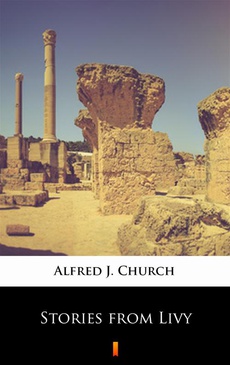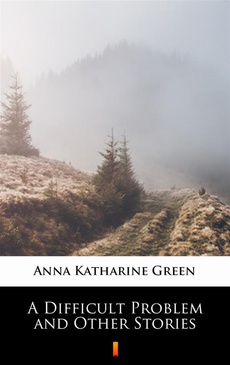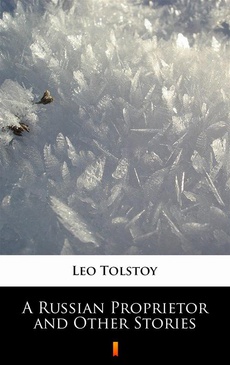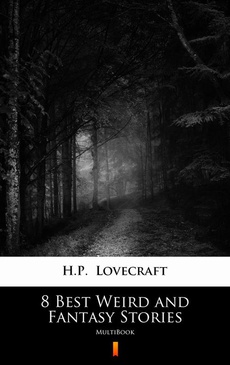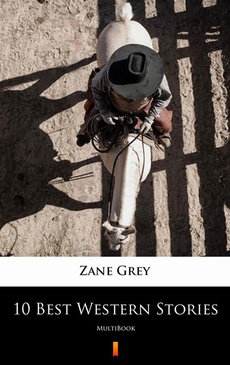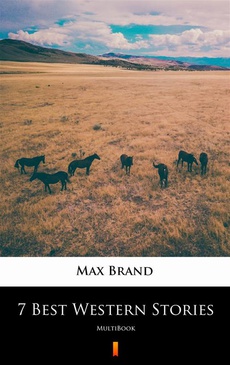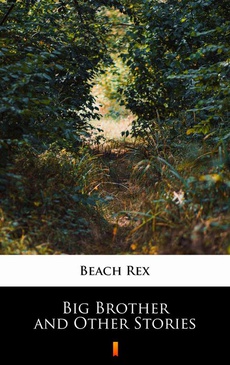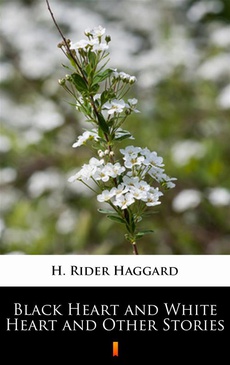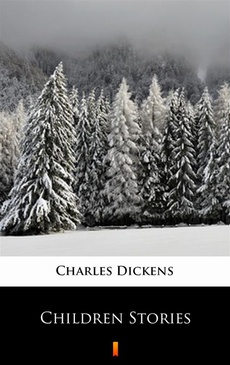POLECAMY
Stories Told Around the Fountain
Papers Offered to Piotr Bieliński on the Occasion of His 70th Birthday
Redakcja:
Wydawca:
Format:
pdf, ibuk
Teksty zawarte w tomie okolicznościowym dedykowanym prof. Piotrowi Bielińskiemu na siedemdziesięciolecie urodzin dotyczą archeologii, ikonografii i kultu, ceramiki oraz innych aspektów kultury materialnej starożytnego Bliskiego Wschodu. Chronologiczne i geograficzne spektrum poruszanych w nich zagadnień odzwierciedla zainteresowania badawcze Jubilata związane przede wszystkim z epoką brązu na Bliskim Wschodzie, od północnej Mezopotamii po Półwysep Arabski. Autorzy ofiarowanych mu tekstów sięgają w nich jeszcze dalej, do Egiptu, Cypru i rzymskich prowincji południowo-wschodniej Europy. Choć większość kontrybucji dotyczy epoki brązu, są wśród nich również takie, które dotyczą okresu neolitu z jednej strony, poprzez czasy rzymskie po okres islamski z drugiej.
Pięć spośród 42 tekstów porusza tematy związane ze stanowiskiem Tell Arbid – miastem w północnej Mezopotamii, które zostało poznane dzięki wykopaliskom Bielińskiego trwającym od 1996 do 2010 roku. Autorzy – członkowie misji tej wykopaliskowej – omawiają ceramikę (M. Momot, Ł. Rutkowski), także pod kątem jej związku z dietą starożytnych mieszkańców miasta (J. Piątkowska-Małecka i A. Smogorzewska), dane bioarcheologiczne na temat kobiet z Tell Arbid (A. Sołtysiak), a także pochówki dziecięce z okresu Niniwa 5 (D. Szeląg i Z. Wygnańska).
Jednak zagadnienia poruszane w tomie są rozmaite i często przekrojowe. Krajobraz miejski jak i niezurbanizowany północnej Mezopotamii w epoce brązu przewija się w tekstach dotyczących dawnych i bieżących badań wykopaliskowych i powierzchniowych (R. Koliński, M. Masetti-Rouault i O. Rouault), jak również szerszych omówieniach ich rezultatów (K. Jakubiak, A. Reiche, Ö. Tunca). Takie podejście jest widoczne w serii artykułów, które zagłębiają się w analizę ikonograficzną związaną z rozmaitymi aspektami religii i kultu, mitologii oraz przedstawień władców od epoki brązu po Imperium Rzymskie (L. Bachelot, M. Bietak, P. Dyczek, K. Gawlikowska and M. Gawlikowski, H. Meyza, A. Otto and B. Einwag, R. Pierobon Benoit, P. Steinkeller, I. Zych), a także w analizach opartych na tekstach źródłowych (O. Drewnowska, P. Michałowski, P. Taracha). Szczególne miejsce wśród tych prac zajmują teksty poświęcone pieczęciom i ich użyciu w Mezopotamii (C. Kepinski, M. Luciani, D.J.W. Meijer, P. Steinkeller) i na terenach ościennych w różnych okresach (M. Iskra, A. Pieńkowska).
Dzbany ze stemplami królewskich serechów są cytowane jako świadectwo intensywnego handlu pomiędzy wczesnymi władcami z Doliny Nilu a Bliskim Wschodem (K.M. Ciałowicz). Kultura materialna przewija się także w artykułach na temat neolitycznych materiałów budowlanych, (M. Białowarczuk), stroju i akcesoriów (S.N. Amirov i Y.V. Lun’kova), przedmiotów kościanych i amuletów e formie zwierząt (F. Pinnock, C.E. Suter), ciężarków tkackich (A. Ulanowska), a także całej gamy naczyń ceramicznych, od epoki brązu (M. Kelly-Buccellati, D. Lawecka, Ł. Rutkowski) do okresu hellenistycznego (M. Momot) i islamskiego (M. Mierzejewska). Zainteresowanie kulturą materialną podbija też studium wczesnych instrumentów perkusyjnych z Mezopotamii (P. Michałowski).
O szerokim zakresie osiągnięć zawodowych Jubilata świadczy fakt, iż w tomie znalazły się również teksty poświęcone nowoczesnym standardom dokumentacyjnym, ich rozwojowi oraz zastosowaniu w archeologii Bliskiego Wschodu (M. Rekowska i W. Nowakowski, P. Zakrzewski), projektom konserwatorskim (M. Kowalczyk i M. Olbryś) oraz kreatywnemu zachowaniu dziedzictwa (G. Buccellati). To ostatnie wiąże się również z apelem M. Al.-Maqdissi’ego w związku z przyszłością badań archeologicznych w Syrii.
Jak przystało na tom jubileuszowy, otwiera go część pt. „Stories about Piotr”. Jest tam zwyczajowa krótka biografia i lista publikacji, ale także cztery eseje poświęcone Bielińskiemu, nie tylko jako archeologowi (W. Borodziej, S.K. Kozłowski, W. Lengauer, and W. Tygielski). Oferują one bardzo osobiste spojrzenie na temat Uniwersytetu Warszawskiego jako instytucji naukowej oraz alma mater Profesora, z którą jest związany zawodowo przez ponad pół wieku.
******
The papers offered in this volume, celebrating Prof.. Piotr Bieliński on his 70th birthday anniversary, cover issues of archaeology, iconography and cult, ceramics and other objects of material culture of the Ancient Near East. The chronological and geographical spectrum of these papers reflects the Jubilarian’s core research field of Bronze Age Near East, concentrating on one hand on northern Mesopotamia and on the other reaching out to the Gulf, his colleagues reach even further beyond, to Egypt, Cyprus and the Roman provinces in southeastern Europe. While the bulk of the papers are set in the Bronze Age, a number of the contributions reach back in time to the Neolithic as well as forward, to Roman and even medieval Islamic times.
Five of the 42 papers in general explore topics related to Tell Arbid, a site in northern Mesopotamia that Bieliński brought to the limelight, excavating this primarily Bronze Age city with a long history between 1996 and 2010. The authors, all of them team members, discuss various aspects of ceramics (M. Momot, Ł. Rutkowski,), also in terms of what the Bronze Age diet could have been (J. Piątkowska-Małecka and A. Smogorzewska), bioarchaeological data on women from Tell Arbid (A. Sołtysiak) and the Ninevite 5 infant burials (D. Szeląg and Z. Wygnańska). However, no clear lines can be drawn considering the topics of the presentations as they tend to reach across categories. The Bronze Age landscape, urban and non-urban, of northern Mesopotamia appears in contributions presenting past and current archaeological excavations and ground surveys (R. Koliński, M. Masetti-Rouault and O. Rouault), as well as broader views of the results (K. Jakubiak, A. Reiche, Ö. Tunca). This approach comes through strongly in a series of papers that delve into iconographic studies revolving around various aspects of religion and cult, mythology and ruler representationsfrom the Bronze Age through the times of the Roman Empire (L. Bachelot, M. Bietak, P. Dyczek, K. Gawlikowska and M. Gawlikowski, H. Meyza, A. Otto and B. Einwag, R. Pierobon Benoit, P. Steinkeller, I. Zych), including text-based approaches (O. Drewnowska, P. Michałowski, P. Taracha).
A special place among these studies have papers devoted to seals and sealing practices, in Mesopotamia (C. Kepinski, M. Luciani, D.J.W. Meijer, P. Steinkeller) and in the neighboring regions in different periods (M. Iskra, A. Pieńkowska). Royal serekhs stamped on jars are cited as evidence for early rulers from the Nile Delta trading extensively with the Near East (K.M. Ciałowicz). Material culture appears also in contributions on Neolithic building materials (M. Białowarczuk), dress and accessories (S.N. Amirov and Y.V. Lun’kova), reworked ivory pieces and animal-shaped amulets (F. Pinnock, C.E. Suter), craft discoid loom-weights for weaving (A. Ulanowska), and a variety of ceramics, from Bronze Age (M. Kelly-Buccellati, D. Lawecka, Ł. Rutkowski) through Hellenistic (M. Momot) to Islamic (M. Mierzejewska). Drumming up interest in non-material culture is a study of early Mesopotamian percussionists (P. Michałowski).
It is a sign if the breadth of the Jubilarian’s life achievement that the volume also includes papers on modern documentation standards and their development citing examples from the history of Near Eastern archaeology and current fieldwork (M. Rekowska and W. Nowakowski, P. Zakrzewski), conservation projects (M. Kowalczyk and M. Olbryś) and creative site maintenance (G. Buccellati). The lattermost ties in with an address by M. Al.-Maqdissi concerning the future of archaeological research in Syria.
As is fitting for a Jubilee volume, the opening part introduces Stories about Piotr: the customary brief biography and list of publications, but also four essays on Bieliński, not-only-the-archaeologist (W. Borodziej, S.K. Kozłowski, W. Lengauer, and W. Tygielski) – a very personal look at the academic establishment at the University of Warsaw, the Professor’s alma mater and lifelong place of employment, in the past half a century.
| Rok wydania | 2019 |
|---|---|
| Liczba stron | 792 |
| Kategoria | Archeologia |
| Wydawca | Uniwersytet Warszawski |
| ISBN-13 | 978-83-235-4171-4 |
| Numer wydania | 1 |
| Informacja o sprzedawcy | ePWN sp. z o.o. |
Ciekawe propozycje
Spis treści
| Tributes | 9 |
| Tabula gratulatoria | 19 |
| Piotr Bieliński: List of publications | 23 |
| Opowieści wokół Piotra / Stories about Piotr | |
| Łukasz Rutkowski and Andrzej Reiche | |
| O Piotrze, fontannie i Starożytnym Bliskim Wschodzie / About Piotr, the fountain and the Ancient Near East | 31 |
| Włodzimierz Borodziej | |
| Raport ze śledztwa 19/08/1948, kryptonim „Pan z Krakowskiego Przedmieścia” / Report from the investigation 19/08/1948, codename “The Man from Krakowskie Przedmieście” | 47 |
| Stefan Karol Kozłowski | |
| Piotrusiowy pamiętnik / Piotr’s Diary | 67 |
| Włodzimierz Lengauer | |
| O Piotrze, o sobie i o dawnych czasach (czyli Rzeczy minione i rozmyślania) / On Piotr, myself and bygone times (or My past and thoughts) | 81 |
| Wojciech Tygielski | |
| Piotr | 91 |
| Stories told around the fountain | |
| Michel Al-Maqdissi | |
| La Syrie, le Proche-Orient et l’avenir de l’archéologie | 97 |
| Shahmardan N. Amirov and Yulia V. Lun’kova | |
| Dress, jewelry and a musical instrument of the inhabitants of Tell Khazna I | 105 |
| Luc Bachelot | |
| Les idoles aux yeux de Tell Brak, essai d’interprétation | 127 |
| Marcin Białowarczuk | |
| The first builders of the Northern Levant. Notes on early Neolithic construction materials | 145 |
| Manfred Bietak | |
| The Obelisk Temple in Byblos and its predecessors | 165 |
| Giorgio Buccellati | |
| From Urkesh to Mozan. The itinerary of a project in wartime | 187 |
| Krzysztof M. Ciałowicz | |
| Once more on the first kings of Egypt | 205 |
| Olga Drewnowska | |
| Old Babylonian Nērebtum and its main deity | 221 |
| Piotr Dyczek | |
| Legio I Italica – Orientalis | 235 |
| Krystyna Gawlikowska and Michał Gawlikowski | |
| A painted diptych from Gerasa | 251 |
| Mateusz Iskra | |
| Archaeological and social contexts of Late Bronze Age cylinder seals from Transcaucasia | 259 |
| Krzysztof Jakubiak and Artavazd Zakyan | |
| Metsamor: topography of an archeological site near Metsamor River | 271 |
| Marylin Kelly-Buccellati | |
| Urkesh ceramic evidence for function | 285 |
| Christine Kepinski | |
| Once more about cylinder-seal impressions on ceramic vessels: an anthropological point of view on a find from Tilbeshar | 305 |
| Rafał Koliński | |
| Hiptūnu and Habruri: an archaeological point of view | 313 |
| Marek Kowalczyk and Mirosław Olbryś | |
| The citadel in North Mesopotamian Erbil (Iraq): challenges for the preservation and adaptation to new function of an Ottoman period house | 333 |
| Marta Luciani | |
| The long life of a royal seal and the Nuzi bullae | |
| in the Harvard Semitic Museum | 355 |
| Dorota Ławecka | |
| Late Chalcolithic pottery from Tell Raffaan (Eski Mosul Dam Project) | 393 |
| Maria Grazia Masetti-Rouault and Olivier Rouault | |
| Another town in the Northern Mesopotamia plains: excavations at Qasr Shemamok (Kurdistan, Iraq) in 2017–2018 | 417 |
| Diederik J.W. Meijer | |
| Seal, amulet or both? | 433 |
| Henryk Meyza | |
| A marmara plaque from Nea Paphos with Ganymedes abducted by an eagle | 441 |
| Piotr Michałowski | |
| On some early Mesopotamian percussionists | 451 |
| Marta Mierzejewska | |
| Islamic harbour in Kharaib al-Dasht Bay? Some remarks on the pottery collection from the Underwater Survey along the coast of Failaka Island | 477 |
| Marta Momot | |
| Hellenistic tableware with stamped decoration from Tell Arbid (Syria) | 493 |
| Adelheid Otto and Berthold Einwag | |
| Three ritual vessels from the Mittani-period temple at Tell Bazi | 503 |
| Joanna Piątkowska-Małecka and Anna Smogorzewska | |
| “Pigeon broth” and other meat dishes prepared by the people of Tell Arbid in the 3rd millennium BC | 519 |
| Agnieszka Pieńkowska | |
| A 3rd millennium BC stone stamp seal from the Omani site | |
| of Qumayrah Ayn 3 | 535 |
| Rafaella Pierobon Benoit | |
| Tell Barri/Kahat: le ‘Pantheon’. Données et problèmes | 547 |
| Frances Pinnock | |
| About some animal-shaped “amulets” from Northern Syria | 571 |
| Andrzej Reiche | |
| Isin-Larsa and Sasanian graves from the site of el-Saadiya in the Hamrin region, Iraq | 583 |
| Monika Rekowska and Wojciech Nowakowski | |
| The power of image or how the art of photography changed early archaeology | 599 |
| Łukasz Rutkowski | |
| Late 3rd millennium BC painted pottery from Tell Arbid | 619 |
| Arkadiusz Sołtysiak | |
| Women from Tell Arbid | 639 |

